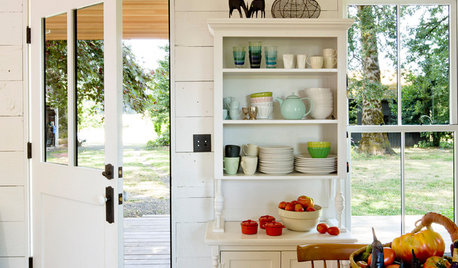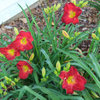Really tall oldies?
mthorebgarden
16 years ago
Related Stories

DECORATING GUIDESLiving Room Features That Never Go Out of Style
These key pieces will help your living room keep its good looks, no matter what's in fashion
Full Story
FARM YOUR YARDHow to Farm Your Parking Strip
Get an up-close look at a thriving street-side edible garden, one of many sprouting up in Seattle
Full Story
HOUZZ TOURSHouzz Tour: Better Flow for a Los Angeles Bungalow
Goodbye, confusing layout and cramped kitchen. Hello, new entryway and expansive cooking space
Full Story
CHRISTMASGift Giving the Simple-ish Way
If buying holiday gifts drives you to the spiked holiday punch, try these easier but still rewarding traditions
Full Story
MOST POPULARHow to Choose the Right Kitchen Sink
Learn about basin configurations, sink shapes, materials and even accessories and specialty sinks
Full Story
DECORATING GUIDESBring in da Funk: How Humble Touches Give a Home Soul
Shake up expectations and stir up interest with pieces that show patina, create contrast or offer a jolt of surprise
Full Story
LAUNDRY ROOMSRoom of the Day: The Laundry Room No One Wants to Leave
The Hardworking Home: Ocean views, vaulted ceilings and extensive counter and storage space make this hub a joy to work in
Full Story
SMALL HOMESCan You Live a Full Life in 220 Square Feet?
Adjusting mind-sets along with furniture may be the key to happiness for tiny-home dwellers
Full Story
REMODELING GUIDESWake Up Rooms With the Power of Fresh Air
Even the trendiest interior designs can feel stale when your home is in permanent lockdown. Look to windows and doors for the solution
Full Story
ORGANIZING3 Sneaky Storage Spots
Your home has more room for storage than you think. Maximize every inch with these clever organizing solutions
Full Story






berrytea4me
bambi_too
Related Discussions
'Really' Oldies, but Goodies...
Q
My succulent is really tall and leaning on a stick! help!
Q
Really tall cream amaryllis- which one?
Q
Really tall or should it be trailing?
Q
laurelin
joespider
Nancy
mthorebgardenOriginal Author
berrytea4me
bambi_too
berrytea4me
mthorebgardenOriginal Author
avonlady
joespider
tweetypye
berrytea4me
laurelin
mikeandbarb
bambi_too
brian_mahieu
brian_mahieu
bambi_too
brian_mahieu
tweetypye
bambi_too
lynxe
brian_mahieu
hemlady
brian_mahieu
laurelin
berrytea4me
bambi_too
berrytea4me
lynxe
brian_mahieu
bambi_too
brian_mahieu
brian_mahieu
berrytea4me
bambi_too
brian_mahieu
smithaven
bambi_too